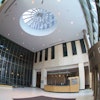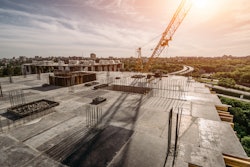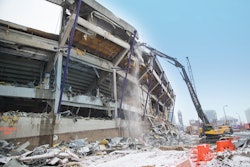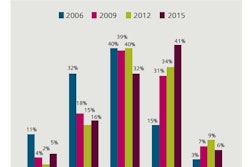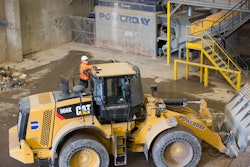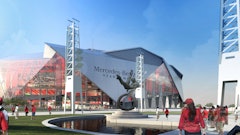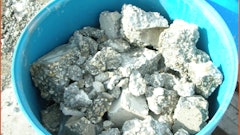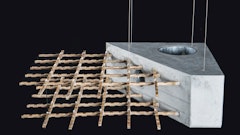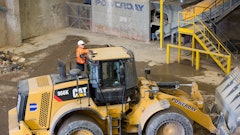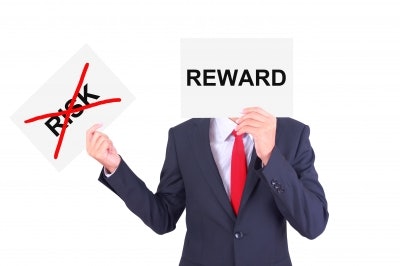
Recently, The U.S. Green Building Council (USGBC) estimated that 40 to 48% of new non-residential construction was considered green, equating to $120 billion to $145 billion in opportunities for contractors. And that number is growing. The study also found that by 2018, green construction will account for more than 3.3 million U.S. jobs–more than one-third of the entire U.S. construction sector–and generate $190.3 billion in labor earnings.
Study: Green Construction Contributes 2.3 Million Jobs to US Economy
“Green building is playing a massive role in the U.S. construction sector, the clean and efficient energy sector and the U.S. economy as a whole,” said Rick Fedrizzi, CEO and founding chair, USGBC. “More than 2.3 million U.S. workers are taking home $134 billion annually in large part because of green building programs like LEED. Demand for green building will only continue to grow as individuals, businesses and institutions continue to prioritize sustainable approaches to the design, construction and operations of our built environment.”
However, a green construction project comes with increased risks to contractors, especially if there are ratings and certifications involved for the project owner. In a recent article from Construction Executive, Michael Alberico, senior vice president and construction practice leader at Assurance, indicated these risks mainly come from costs and delays associated with the LEED certification process and the higher demands for ROI from these projects.
"Building owners anticipate in advance what kinds of credits they’ll qualify for, and if the building is unable to attain promised certification, they won’t hesitate to file a claim," Alberico says. "The bottom line is that green buildings have a much more concretely defined scale of success and failure, and that means the contractor can easily be held responsible for unexpected shortcomings.
"It’s not uncommon for construction projects to specify sustainable building practices, especially with energy costs continuing to rise and building standards becoming more environmentally rigorous. Capitalizing on the trend to build green can quickly turn profit margins from black to red however if there is no clear understanding of the process, risks or additional contract exposures."
According to the Alberico, here are four steps to manage and minimize contract exposures on these green building projects:
1. LIMIT CONTRACT WARRANTIES
It’s true that green building leads to operational cost savings, healthier work and living spaces, and increased tax incentives, but it’s important to limit warranties to those expressly provided in the contract.
Additionally, no single party is responsible for meeting a construction project’s certification goals, and certification is typically regulated by a third party over which a contractor has no control. Therefore, never guarantee the level of certification on a project. Instead, warrant that the work will meet project specifications and accepted industry standards.
2. REDUCE DELAY RISKS
Anticipate unexpected delays, such as a shortage of green materials or lack of skilled workers, by updating the contract’s force majeure clause to shift the risk allocation for these types of delays to the owner.
Also, specifically define in the contract what’s meant by substantial completion, and don’t tie it to a project’s certification status. Obtaining certification may take up to a year after substantial completion of a project is reached. Therefore, it’s also advisable to revise the contract if it restricts payments based on certification status.
3. DEFINE CONSEQUENTIAL DAMAGES
While many traditional construction contracts include mutual waivers of consequential damages, it’s unclear if the courts consider lost tax incentives, decreased energy savings, decreased water bill savings, etc., as consequential damages. To ensure these types of sustainable construction damages are waived, include them in the clause waiving consequential damages.
4. RETAIN RIGHT TO CURE
Green building projects often use new, unproven materials and technologies, which may lead to future maintenance and performance issues. Spell out in the contract who is responsible for a component’s maintenance or malfunction, or what happens if a manufacturer goes out of business. Additionally, incorporate a clause that states the company retains the right to cure any alleged defective work, materials or equipment prior to the owner hiring another contractor to repair the work.
Green building has created millions of jobs and contributed hundreds of billions of dollars to the U.S. economy, with the construction of LEED-certified buildings accounting for about 40% of green construction’s overall contribution to GDP in 2015 alone. You know that number is going to continue growing. Sustainable construction is not going away. Contractors that understand the risks and rewards of these projects will be a step ahead of their competition and reap the financial rewards.
What are your thoughts on green building? Has your company recently worked on a LEED certified project? Let us know the risks and rewards you saw in the comment section below.



